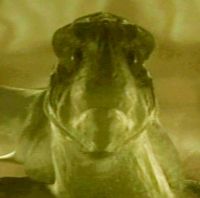Strange New Worlds picks up as a spin-off of Discovery Season 2. If there’s one Nu Trek to watch, it’s this.
Discovery and SNW are prequels to TOS. However, Season 1 of Disco is very weak with the exception of one or two episodes. Season 2 is much better and you can probably start here. Then go into S3 or SNW.
Season 3 is where I believe Discovery really shines. It also changes setting entirely. 4 is good too.
Lower Decks takes places shortly after/around DS9/Voy era. So if you’re familiar with 90’s trek, this show is basically like home cooking. You can watch it anytime.
Picard Season 1 and 2 are bad. But if you think of it as non-canon Fan Fiction written by Patrick Stewart, it’s just kinda fun. Season 3 is the final season and is basically the show everyone actually wanted. It’s an epilogue to TNG. There’s a few references to Season 1 and 2, but you can Google the small gaps. You can watch it anytime.
Also, watch The Orville. It’s a love letter to Star Trek, has Trek writers, producers and actors. It’s starts as a dumb comedy that didn’t really know what it’s doing, but by episode 3 they start to find their footing.
Season 2 and 3 and pretty much perfect and IMO as good as the best of Trek. The show gets more serious and the humor takes a backseat to the human element.There’s also Prodigy, which doesn’t run concurrent to Lower Decks or Picard. It takes place a year or two after Lower Decks, meaning Lower Decks may catch up with it. Some of the flashbacks in Picard take place at about the same time as Prodigy, though the main show is a few years later.
There’s isn’t any plot overlap between Prodigy and the other two post-Voyager shows. It takes a few episodes to get going, but once it finds its footing, it’s worth it.
Accidentally posted twice, not sure how to delete comments?
I think whether or not DIS is mandatory for SNW depends on your classic knowledge - i bailed on it very early on, had zero issues picking up SNW - but i’m also a fourth gen trek nerd so, yannow, pike’s fate is very well known to me. The addons i picked up as i went.
Without that knowledge though i could see where someone would be utterly lost on SNW
The most I’d recommend is:
DIS Seasons 1 and 2 —> SNW —> LD —> PRO —> PIC —> DIS Seasons 3 and 4 (these can also be viewed before SNW).
It mostly doesn’t matter except for a couple of linking points:
-
Strange New Worlds effectively directly follows events of Discovery Season 2 with a plot point introduced in season 2 being a bit of a focus of SNW S1
-
It is probably advisable to watch Picard S1 before Discovery S3 and 4 as the first season of Picard introduces lore elements that have relevance.
-
My suggestion;
-
- Discovery Seasons 1&2 only.
-
- Strange New Worlds 1&2 (current).
As for Picard, if you enjoyed the above 4 seasons, I would then watch Star Trek: The Next Generation before Picard as it is a sequel.
The consistency of TNG didn’t pick up for me until midway Season 3, now I like it significantly more than Discovery post Season 2.
Note: if you skip the first couple of seasons of TNG, what you gain in consistency you lose in scenes of dudes in mini-dresses, so swings and roundabouts really.
Also riker trying to get his horn honked. I mean it happens all throughout the series, but its entertaining nonetheless.
getting his trombone polished, you say?
-
It doesn’t really matter all that much since the shows are spread all over the timeline. There is one exception though: Strange New Worlds is a direct spinoff of Discovery. So you should watch that first. (It’s also the show that takes the longest to figure itself out, maybe with the exception of Picard, so it for the most part only goes up from there)
SNW spins out of DIS season 2, so probably watch that before starting SNW.
Beyond that I wouldn’t say there’s a strict order, until the recent SNW/LD crossover the rest have been pretty self-contained (almost regrettably so).
As far as Discovery and forward go, I’d honestly recommend order of release. I’m not going to feed you any “don’t watch this, do watch that”, I just want to say that various bits of lore are introduced in some series, are then referenced in later episodes of other series. All of the series are making references to each other now. So, I think you get the most of the lore references, if you watch them in release order.
That said, it probably doesn’t really matter – Most of the recent series are in distinctly different places and/or times. Discovery and SNW are the closest (to start) in time and space, and Discovery S2 directly feeds to SNW. Prodigy and Lower Decks are in a similar time space, but very far apart in the galaxy, and Picard starts the farthest ahead in the timeline, though Discovery will overtake it, and Picard also has flashbacks that take place probably close to the time of Lower Decks or Prodigy.
Soooooooooo… overall, probably doesn’t matter, but in my opinion, you get the most benefit of lore knowledge in release order.
I just treat them all as their own continuity. Everything’s so messed up now.
C’mon mate that’s quitter talk, making the mess make sense is half the fun of startrek continuity. Plus as time has gone on and the teams involved have gained hands on experience making trek the contributions have progressively gotten more constructive with the continuity rather than combative.
Lol. I think Lemmy would benefit from “categories” of up-votes/down-votes. This comment got my up-vote entirely because I found it amusing.
What do you consider to be “NuTrek”? One issue with the more-recent shows is that they don’t have a lot of continuity, to the extent that they would seem to implicitly contradict each-other (and themselves, between seasons)
with that in mind, there’s no good “viewing order”, as they don’t seem to take place in the same world
One issue with the more-recent shows is that they don’t have a lot of continuity, to the extent that they would seem to implicitly contradict each-other (and themselves, between seasons)
Can you give some examples?
I may not be the OP, but the Klingons from DIS Seasons 1 and 2 are a lot different than SNW Season 2. SNW’s look straight up like TNG’s Klingons, while DIS looks like something from a fan remake, although there are some explanations that could explain it, but this isn’t Daystrom so I’ll save them.
I would argue that there are some fairly significant differences between SNW’s Klingons and TNG’s, just as there were differences between TOS’s, and differences every time they showed up in a TOS era movie.
Hell, Michael Dorn’s prosthetic for Worf changed significantly between seasons.
That sort of thing is not a continuity violation. At least not in my mind.
That’s true, I feel Star Trek is supposed to be fluid in its’ timeline, and I don’t care much for continuity violations either, even if I try to keep a consistent headcanon. I don’t really understand the hate “NuTrek” gets. Just because this alien looks slightly different doesn’t mean you need to outrage and invalidate the show’s canon status. Also, to be completely honest, I just pulled the first thing that came to mind. There are not a lot of things I can think of.
The timeline fluidity is a bit of a frustration for me as well, despite the fact that I’ve been reading comic books for 30 years, and it doesn’t bother me a whit when I see a flashback to Spider-Man’s origin and people have smart phones or whatever. But even trying to reconcile Spock claim in “Space Seed” that the last of Earth’s World Wars took place in the 90s, with the implication in “Encounter at Farpoint” that a war was fought with atomic weapons leading up to the mid-21st century.
Part of the problem, obviously, is that they every decided to give anything actual dates. I understand the inclination though; no doubt in 1967 when they were sitting down first build out this world, they wanted to present the idea of WWIII to be looming on the horizon. A lot of the people viewing this when it aired episode would remember being shown videos telling school children to duck under their desks for protection in case of a nuclear attack. But then Voyager travels to 1996 in “Future’s End” and there’s no indication that humanity just went through the third World War.
Hell, in TOS, continuity wasn’t maintained episode to episode for some things. In “Balance of Terror” they hadn’t added photon torpedoes to canon yet, so the Enterprise was firing phasers bolts with proximity explosions at the Romulan Bird-of-Prey. There are a handful of different names for the organization the crew serves before Starfleet was named in “Court Martial” and even after that, they still called it Spacefleet Command one last time in “The Squire of Gothos”.
Anyways! Obviously I think the subject of continuity in Star Trek is pretty interesting in and of itself, and I would argue that visual continuity aside, the new iterations from Disco onwards have been fairly mindful of canon. There are occasionally things that skirt the line, but very little that actually break continuity. A big one for me is the site-to-site beaming. In “Day of the Dove”, Kirk asks if it’s ever been done and Spock discusses how dangerous beaming from one point on the ship to another is, and how it requires pinpoint accuracy, but in Disco they do it all the time, and usually just with a voice command to the computer. I also don’t like how fast the transporters on Disco and SNW work, but I don’t think that rises to the level of a continuity violation.
The idea that the new wave of Trek is lousy with continuity errors is, in my opinion, largely perpetuated by people looking for reasons to dislike the shows, and who don’t know canon as well as they believe.
Picking out all the continuity issues in season one of TOS makes a fun drinking game. Balance of Terror also had the crews of both ships whispering like they were worried they could hear each other. lol
Some of the continuity changes, especially to the characters, feel like improvements to me. Chapel and T’Pring are far more interesting in SNW. They don’t just feel like walking tropes as they usually did in TOS.
Speaking of design, I like what they did with the sound in DIS and SNW. They hail someone and it starts with the TOS sound and ends with the TNG sound. They have lots of sounds blended from the different eras and it works surprisingly well.








